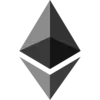24h Change -1.27%
24h High $0.190
24h Low $0.171
24h Volume $146
Max Supply: 0
Circulation: 8,965,469,069.285
Market Cap: $1,658,942,084
Listing Date:
2022-09-08, 08:09:55
Network:
Polygon Main Chain
Asset Type:
Coin
Links
Social
Primary Markets (2 active)
Total Market Volume: ~$147
Liquidity Pools (1 Active)
Total Pool Liquidity: ~$193
| Market | Volume | |
|---|---|---|
$146.71 | ||
$0 |
Hot Wallets
Deposit
Block #72987384 @ 5.11 min ago
Balance: 321.57942507
Updated: 5.03 min ago
Withdraw
Block #72987384 @ 5.11 min ago
Balance: 10628.47478581
Updated: 5.03 min ago
Highlighted Assets
Market Cap: $87.1K $0.000824
Top Volumes
About Polygon
Polygon Network is a scalable blockchain platform with a whole set of products and tools helping developers create decentralized apps. It implements side-chains for off-chain computation while relying on the Proof-of-stake (PoS) consensus algorithm and Plasma framework for providing the high level of the platform’s security. The project has already developed Plasma MVP (Minimum Viable Plasma), WalletConnect protocol, and the Ethereum event notification engine Dagger. The platform is powered by a utility token under the same name. Matic Network explained Matic Network names itself a blockchain agnostic Layer-2 scaling solution with the key goal to facilitate scalable, instant and secure transactions on the blockchain. Initially built upon the Ethereum Network, it adds Plasma-based side-chains on top of it to ensure asset security. In order to resolve the scalability problem inherent to Ethereum and all its derivatives, Matic Network provides Layer-2 solutions which in theory can help it process 2^16 or near 65,000 transactions per block. In addition, it eliminates the problem of interoperability via DEXs which would help users change cryptocurrencies based on different blockchains (for example, Bitcoin and Ethereum) directly between their own wallets.
Stable Connection









